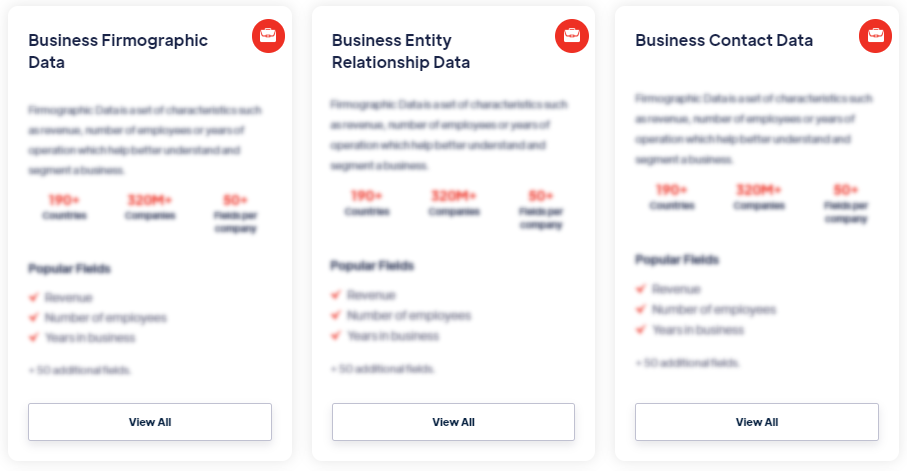Best
Cell Tower Data
Products
Cell tower data refers to information collected from cell towers, also known as cellular base stations or cell sites. It includes various attributes such as the location of cell towers, signal coverage areas, signal strength measurements, antenna configurations, and network parameters. Read more
Our Data Integrations


Request Data Sample for
Cell Tower Data

Browse the Data Marketplace

Frequently Asked Questions
1. What is cell tower data?
Cell tower
data refers to information collected from cell towers, also
known as cellular base stations or cell sites. It includes
various attributes such as the location of cell towers, signal
coverage areas, signal strength measurements, antenna
configurations, and network parameters.
2. Why is cell tower data important?
Cell
tower data is important for several reasons. It helps
telecommunication companies and network operators in network
planning and optimization, identifying coverage gaps,
determining signal strength and quality, improving network
performance, and making informed decisions related to network
infrastructure and expansions.
3. How is cell tower data collected?
Cell
tower data is collected through various methods.
Telecommunication companies and network operators maintain
detailed records of their cell tower installations, including
their geographic coordinates, antenna specifications, and other
relevant information. Additionally, specialized measurement
tools and equipment are used to gather data on signal strength,
coverage, and other network parameters.
4. What are the applications of cell tower data?
Cell tower data has several applications. It helps
telecommunication companies and network operators in optimizing
their network coverage, identifying areas of poor signal quality
or coverage, planning new cell tower installations, assessing
network capacity, and evaluating the performance of their
networks. It is also valuable for site selection, network
expansion, and network infrastructure management.
5. Who uses cell tower data?
Cell tower
data is primarily used by telecommunication companies, network
operators, and service providers. They leverage this data to
ensure optimal network coverage, capacity, and performance.
Government agencies, regulatory bodies, and research
institutions may also use cell tower data for policy-making,
regulatory compliance, and conducting studies related to network
infrastructure and connectivity.
6. How is cell tower data analyzed?
Cell
tower data is analyzed using various techniques and tools. Data
analysis may involve visualizing the locations of cell towers on
maps, assessing signal coverage areas, evaluating signal
strength patterns, identifying areas with weak signal reception,
and correlating network performance metrics with other
variables. Statistical analysis, geospatial analysis, and data
visualization techniques are commonly employed to gain insights
from cell tower data.
7. How is cell tower data used for network optimization?
Cell tower data is used for network optimization by identifying
areas with weak signal coverage or poor network performance. By
analyzing cell tower data, network operators can make informed
decisions about installing new towers, adjusting antenna
configurations, optimizing signal propagation, and upgrading
network infrastructure. The insights derived from cell tower
data enable network operators to improve signal coverage,
enhance network performance, and provide better service to their
customers.
